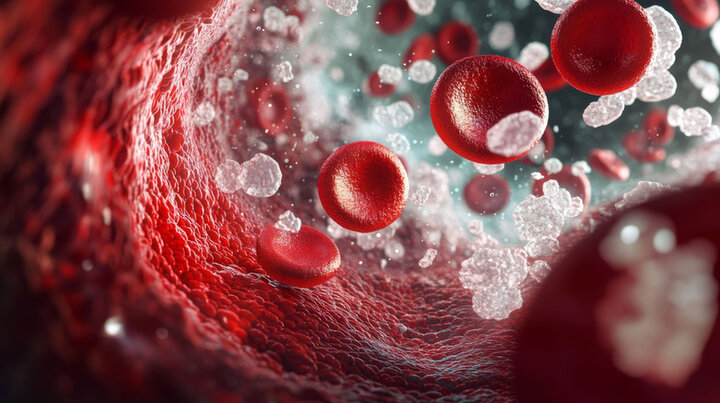KEYWORDS
Precision nutrition
Continuous glucose monitoring (CGM)
Type 2 diabetes prevention
Glycemic variability
Artificial intelligence
Molecular profiling
Abstract
The GLUCOTYPES project, funded by the European Innovation Council, aims to redefine early prevention of type 2 diabetes by advancing the field of precision nutrition. Building on evidence that individuals exhibit highly variable glycemic responses to identical meals, GLUCOTYPES leverages continuous glucose monitoring (CGM), artificial intelligence, and multi-omics profiling. The project introduces a novel classification system, glucotypes, to capture early patterns of glycemic dysregulation. Through AI-powered prediction, biological anchoring, and clinical validation, GLUCOTYPES seeks to explain and anticipate how individuals respond to different foods. The insights gained offer promising opportunities for precision nutrition strategies and targeted product development in the food and biotech sectors, marking a shift from general nutrition advice toward tailored interventions grounded in individual biology.
Why do some people maintain stable blood sugar levels on a Mediterranean diet while others experience less benefit? Can we tailor nutrition to individual’s characteristics before disease takes hold? And how can this shape the future of food innovation and metabolic health?
These are questions driving our work on GLUCOTYPES, a project funded by the European Innovation Council (EIC) Pathfinder programme (1). Our aim is simple yet ambitious: to transform how we use nutrition as a preventive tool, particularly in tackling type 2 diabetes (T2D), by leveraging advances in continuous glucose monitoring, artificial intelligence, and molecular biology.

The Challenge: Why general nutrition advice falls short
Despite decades of public health efforts, T2D continues to rise at an alarming rate. One key reason is that our prevention strategies still rely on “one-size-fits-all” nutritional guidance. Yet scientific evidence increasingly shows that people respond very differently to the same food (2).
This became especially clear to me during a study we conducted in Boston, where 1,000 individuals consumed the same standardized meal under the same conditions. Remarkably, no two individuals exhibited the same post-meal glucose response (3). The inter-individual variability we observed was striking, not random noise, and pointed out to fundamental molecular differences among individuals (4).
Building upon this knowledge, the GLUCOTYPES project wanted to go a step further, not just relying on single glucose measurements, but capturing the dynamic patterns and early glycemic deviations that often emerge in the initial stages of disease development. Continuous glucose monitors (CGMs) enable this by tracking real-time glucose fluctuations throughout daily life, offering a comprehensive view of metabolic health, and potentially inform more targeted nutritional recommendations.
Glucotypes: A new way to classify and predict responses to food
The term “glucotypes” was first introduced in a small study conducted in the US that identified three distinct patterns of glycemic responses to diet among healthy individuals (5). The study, while innovative, suffered from some constraints, such as the number of tested meals. In addition, there were no other physiological or molecular determinations to infer glucotype-specific mechanisms. Within GLUCOTYPES, we are building on this work with a larger dataset and a more integrative approach. Our consortium brings together experts from across Europe in fields including nutrition, bioinformatics, microbiomics, and machine learning.
Our project has two central goals:
- To predict how individuals will respond to specific foods or diets according to AI-generated glucotypes.
- To understand the why: the underlying biological mechanisms behind these differences in response.
To achieve this, we combine glucose data with multi-omics profiling, including genetics, gut microbiota, and glycoproteomics. Our vision is to develop a robust algorithm that doesn’t just predict glucose response but links it to identifiable molecular processes. In other words, we want to explain why someone reacts a certain way to a given food and anchor that explanation in biology.
What makes GLUCOTYPES innovative?
There are three key innovations in our approach:
- AI-powered prediction: We use foundational AI models, akin to the large language models powering ChatGPT, to analyze high-frequency CGM data and the predict dietary responses. These models learn from rich datasets collected over several days to provide a nuanced representation on someone’s metabolite state, which largely influences responses to diet.
- Biological anchoring: Prediction without explanation is not enough. We go further by connecting AI outputs with molecular mechanisms, making the science interpretable and potentially translatable. This allows us to identify specific genes, microbial signatures, or protein profiles that explain individual variation in glycemic response.
- Proof-of-concept validation: We are designing a clinical precision nutrition study to test whether our predictions hold true in practice. This will also help demonstrate whether targeted dietary advice is superior to general dietary recommendations for cardiometabolic health outcomes among individuals with distinct glucotypes

Why this matters to the food industry
GLUCOTYPES offers unique opportunities for innovation in the food sector. By understanding how different individuals respond to ingredients or food formats, we can move toward targeted product development.
For example, certain fibers or antioxidants may be particularly beneficial to individuals with specific patterns of early glycemic dysregulation. Collaborating with food manufacturers, we could evaluate these components more precisely, helping companies develop functional products that align with the principles of precision nutrition.
Consumers are becoming more sophisticated. Just as we now see lactose-free or gluten-free products tailored to specific needs, it is conceivable that future supermarket aisles will offer foods targeted to metabolic profiles, supporting consumers who are managing early signs of insulin resistance, high blood sugar, or other pre-disease states.
Opportunities for collaboration
Although GLUCOTYPES is still in its early stages, we are keen to explore collaborations with the food and biotech industries. Whether it’s testing new ingredients, developing consumer-facing tools, or exploring molecular targets for dietary interventions, the possibilities are broad.
I encourage interested stakeholders to reach out to any of our consortium partners. As project coordinator, I can facilitate introductions and explore how industry interests align with our goals. We are always open to scientific dialogue and co-creation.
Part of a broader vision: The EIC precision nutrition portfolio
GLUCOTYPES is one of several cutting-edge projects funded under the EIC precision nutrition portfolio. Together, these projects form a vibrant community exploring diverse aspects of personalized nutrition, from asthma management to food manufacturing innovations.
Through regular meetings and cross-project activities, we actively seek synergies and joint funding opportunities. This portfolio is an ideal space for industry partners to tap into a broader ecosystem of expertise and technologies.
What’s next?
In the months ahead, we’ll continue developing our machine learning models, expand our molecular analyses, and finalize the design for our proof-of-concept study. While it’s early days, we believe the outputs from GLUCOTYPES will lay the groundwork for real-world applications—both in healthcare and in food innovation.
Ultimately, our goal is to help design a food system where nutritional interventions are not only evidence-based, but individually effective. If we succeed, we won’t just be managing disease—we’ll be preventing it with precision.
References and notes
- GLUCOTYPES - Glucose variability patterns for precision nutrition in diabetes. https://glucotypes.eu. Published 2024. Accessed 24 June, 2025.
- Zeevi et al. Personalized nutrition by prediction of glycemic responses. Cell. 2015;163(5):1079-1094. https://doi.org/10.1016/j.cell.2015.11.00
- Berry et al. Human postprandial responses to food and potential for precision nutrition. Nature medicine. 2020;26(6):964-973. https://doi.org/10.1038/s41591-020-0934-0
- Guasch-Ferré et al. Precision nutrition for cardiometabolic diseases. Nat Med. 2025;31:1444–1453. https://doi.org/10.1038/s41591-025-03669-9
- Hall et al. Glucotypes reveal new patterns of glucose dysregulation. PLoS biology. 2018;16(7):e2005143. https://doi.org/10.1371/journal.pbio.2005143



